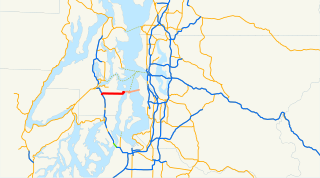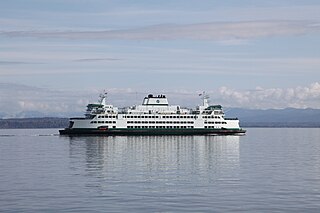Related Research Articles

The Tulalip Tribes of Washington, formerly known as the Tulalip Tribes of the Tulalip Reservation, is a federally recognized tribe of Duwamish, Snohomish, Snoqualmie, Skagit, Suiattle, Samish, and Stillaguamish people. They are South and Central Coast Salish peoples of indigenous peoples of the Pacific Northwest Coast. Their tribes are located in the mid-Puget Sound region of Washington.

The Suquamish are a Lushootseed-speaking Native American people, located in present-day Washington in the United States. They are a southern Coast Salish people. Today, most Suquamish people are enrolled in the federally recognized Suquamish Tribe, a signatory to the 1855 Treaty of Point Elliott. Chief Seattle, the famous leader of the Suquamish and Duwamish Tribes for which the City of Seattle is named, signed the Point Elliot Treaty on behalf of both Tribes. The Suquamish Tribe owns the Port Madison Indian Reservation.
Lushootseed, also Puget Salish, Puget Sound Salish or Skagit-Nisqually is a language made up of a dialect continuum of several Salish tribes of modern-day Washington state. Lushootseed is one of the Coast Salish languages. The latter is one of two main divisions of the Salishan language family.

The Chimakum, also spelled Chemakum and Chimacum are a near extinct Native American people, who lived in the northeastern portion of the Olympic Peninsula in Washington state, between Hood Canal and Discovery Bay until their virtual extinction in 1902. Their primary settlements were on Port Townsend Bay, on the Quimper Peninsula, and Port Ludlow Bay to the south.

Mukilteo Lighthouse Park encompasses the lighthouse at the west end of the city of Mukilteo, Washington, and 12 acres (0.049 km2) south of it. The property is west and south of the Washington State Ferries terminal with ferry service to Clinton, Whidbey Island, and is bordered on the south and east by the BNSF Railway mainline. Whidbey Island lies across a narrow portion of Possession Sound and is easily visible from the shore.

The MV Wenatchee is a Jumbo Mark II-class ferry operated by Washington State Ferries. Launched in 1998, she was the second in her class in the fleet following the MV Tacoma.

The MV Cathlamet is an Issaquah 130 class ferry operated by Washington State Ferries.

The MV Hyak is a Super-class ferry that was operated by Washington State Ferries. Built in 1966 at the National Steel and Shipbuilding Company shipyard in San Diego, the ferry began service on July 20, 1967 and normally ran on the Seattle–Bremerton route or the Anacortes–San Juan Islands run.

The Steel Electric-class ferries became part of the Washington State Ferry System when Puget Sound Navigation Company was acquired in 1951. They were built on San Francisco Bay for service on Southern Pacific and Northwestern Pacific Railroad routes across that bay.
The M/V Kitsap was a ferry built in 1925 at the Lake Washington Shipyard in Houghton, Washington. She was 165 feet (50 m) long, and her original capacity in 1925 was 95 cars and approximately 800 passengers. By 1960, cars had become much bigger and her capacity was reduced to 32 modern automobiles and 325 passengers. A 600-horsepower Estep diesel engine allowed her to sail at 12 knots when originally built. Almost every part of her was from Washington state; her hull and superstructure were built from Washington-grown fir, and her Estep engine was built in at Washington Iron Works in Tacoma.

State Route 160 (SR 160) is a 7.47-mile-long (12.02 km) long state highway serving Kitsap and King counties in the U.S. state of Washington. The highway begins at an interchange with SR 16 in Port Orchard and travels east to the Southworth ferry terminal, where the route continues onto a ferry to Vashon Heights, the former southern terminus of SR 339, and further east to end at the Fauntleroy ferry terminal in Seattle.

The Kwa-di Tabil-class ferries, previously known as the 100 Vehicle class and later 64 Vehicle class, were built by Washington State Ferries to replace the retired Steel Electric ferries. The vessels serve lower traffic routes and carry up to 64 vehicles. The State of Washington spent approximately $213 million to construct the three ferries in this class.

The Olympic Class ferries are the newest vessels to the Washington State Ferries fleet. They are intended to allow the agency to retire the aging Evergreen State-class ferries currently in service. The ferry design is based on the Issaquah-class ferries which have proven to be the most reliable and versatile in the fleet. The Olympic Class ferries are designed to serve all routes and terminals in the Washington State Ferries system. All vessels were built in Washington as required by state law.

State Route 305 (SR 305) is a 13.50-mile-long (21.73 km) state highway in the U.S. state of Washington, primarily serving Bainbridge Island in Kitsap County and connecting it to Seattle in King County via the Seattle–Bainbridge Ferry. The highway travels north through Bainbridge Island and leaves the island on the Agate Pass Bridge into the Kitsap Peninsula. SR 305 continues northwest through Poulsbo, intersecting SR 307 and ending at the SR 3 freeway. The highway was created during the 1964 highway renumbering and was preceded by Secondary State Highway 21A (SSH 21A), established in 1937. The ferry, part of the highway since 1994, is served by the Jumbo Mark II class MV Tacoma and MV Wenatchee and operates on a 35-minute crossing time.

State Route 339 (SR 339) is a 8.5-nautical-mile-long state highway in the U.S. state of Washington. It is designated on a former state-run ferry route that connected Vashon Island's Vashon Heights ferry terminal to downtown Seattle's Pier 50, via a passenger-only ferry, the MV Skagit. The ferry was financed by the King County Ferry District (KCFD) and tolls collected at Pier 50. Despite being part of the KCFD, the ferry was operated by Washington State Ferries (WSF). SR 339 was one of only four ferry routes providing access to and from Vashon Island, and had the lowest annual average ridership of the four routes. The state of Washington took over the operation of the ferry route in 1951, and designated it SR 339 in 1994. The ferry was discontinued in 2006 and was replaced by a King County Water Taxi route.

MV Chetzemoka is a Kwa-di Tabil-class ferry built at Todd Pacific Shipyards in Seattle, Washington for the Washington State Ferries. It was scheduled to start on the Port Townsend-Coupeville (Keystone) route in September 2010, but sea trials revealed excessive vibrations in the vessel's propulsion system. The ferry was christened by Governor Christine Gregoire and began service November 14, 2010.

Colman Dock, also called Pier 52, is the primary ferry terminal in Seattle, Washington, United States. The original pier is no longer in existence, but the terminal, now used by the Washington State Ferry system, is still called "Colman Dock".

MV Suquamish is an Olympic-class ferry that is operated by Washington State Ferries and the inaugural sailing was at 12:30pm on Thursday, October 4, 2018. The vessel will carry 144 cars and 1500 passengers.
Deborah Parker, also known by her native name cicayalc̓aʔ, is an activist and indigenous leader in the United States. A member of the Tulalip Tribes of Washington, she served as its vice-chairwoman from 2012 to 2015 and is, as of July 2018, a board member for Our Revolution and the National Indigenous Women's Resource Center. She is also a co-founder of Indigenous Women Rise.
References
Sources
- Randall, Ann (February 13, 2018), "The Floating Art Galleries of the Washington State Ferries", West Sound
- Lacitis, Eric (2018), "Another reincarnation for the dearly departed ferry Kalakala. This time as public art.", The Seattle Times– via Tacoma News Tribune
- Pilling, Nathan (February 5, 2018), Bainbridge artist hopes ferry terminal mural will inspire a wave of public art, Seattle: Kitsap Sun – via KING-TV
- "WSF Terminal Design Manual" (PDF). April 2016. M 3082.05.
In July 1974, Washington State’s Legislature established the Art in Public Places (AIPP) Program of the Washington State Arts Commission. The AIPP Program facilitates the acquisition of artwork with funds generated by new state-funded public building construction. The AIPP Program applies to the construction of WSF ferry terminal buildings.
- Kalliber, Kim (January 13, 2021). "New Mukilteo ferry terminal features Tulalip artwork and shares rich history". Tulalip News. Tulalip Tribes.
- Howard, Michelle (January 4, 2017). "Washington State Ferries Launches Student Art Contest – Washington state students in grades six through eight have an opportunity to have their artwork on upcoming spring ferry schedules". Maritime Logistics Professional.
- "WSF seeks student art". Port Townsend Leader. September 27, 2016.
- Rupp, James M. (1992). Art in Seattle's Public Places: An Illustrated Guide. Seattle: University of Washington Press. p. 35 – via Smithsonian Art Inventories Catalog; id IAS 75008658.
- "Calling Suquamish artists". Suquamish News. Suquamish Tribal Government. January 2018.